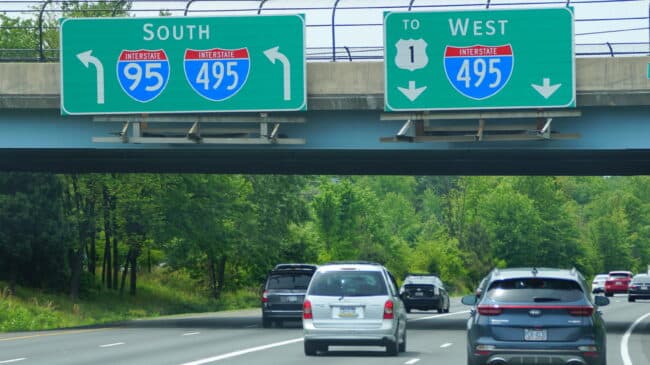Some people are questioning the use of a long-term public-private partnership (P3) for the Maryland express toll lanes and American Legion Bridge replacement. Because P3s are complex, it’s not surprising that critics misunderstand this subject.
First, a long-term P3 involves the state (public partner) delegating to a competitively selected private partner the responsibility to design, build, finance, operate and maintain a major infrastructure facility. The long-term agreement assigns risks to the party best able to deal with each risk. Typically, cost overruns and late completion are among the risks the private partner accepts.
Second, there are two different kinds of P3, each financed differently. Maryland’s Purple Line light-rail project was financed based on annual payments of taxpayer money to the private partner, adjusted based on performance. In this kind of P3, some risks are transferred, but the risk of too few customers is retained by the state. The private partner finances the project based on the state’s commitment to make annual payments.
By contrast, the P3 model used for the express lanes project is financed based on toll revenue, not tax money. In this model, the risk of too few customers (and hence too little revenue) is borne by the private partner, not the taxpayers. And the only ones paying tolls are those who choose to use the express lanes; the regular lanes remain free.
This second kind of P3 has a long record of success, having financed 12 express toll lane projects in five states, including the Interstate 495 express lanes in Virginia. For those 12 projects, the financing was a mix of debt (revenue bonds and federal loans) and private equity, with the average project having 37 percent equity — a high-level commitment by the private partner. Eleven of those 12 are now in operation and have weathered the pandemic in good shape, with some already handling more customers than before the pandemic. Still, any pandemic-caused revenue losses have been absorbed by the private operators.
Maryland taxpayers are not at risk. The Purple Line (different kind of P3) and the Indiana Toll Road are not comparable examples. Though the Indiana P3 did declare bankruptcy after its truck traffic revenue collapsed during the Great Recession, there was no state or taxpayer bailout. The original P3 company lost its equity investment. The state auctioned off the remainder of the long-term agreement, and the winning bid (from a consortium of public pension funds) was enough to make the bondholders whole. The toll road continues to invest in modernization, including the installation of electric vehicle charging stations.
Scare tactics with toll rates should not scare residents. Potential peak-of-the-peak toll rates multiplied by the full length of the express lanes can generate a scary number, but such a toll would not be typical. No such toll rates have been seen on any of the 11 P3 express lanes projects in operation around the country. Northern Virginia P3 express lane tolls averaged $6 to $9 before the pandemic.
For the Maryland express lanes, a recent study estimated a systemwide 18 percent less delay in the morning peak travel period and 32 percent less in the afternoon peak period. The specific cases with little improvement are places where the express lanes end prematurely compared with the original plan (e.g., on I-495 east of the Interstate 270 spur). That is because critics of the plan created so much opposition to extending the express lanes eastward to Interstate 95 that the project was scaled back, creating a bottleneck. By contrast, trips southbound heading to Virginia would face no such bottlenecks, thanks to the extensive express lanes network across the Potomac.
In short, the kind of P3 Maryland wisely selected for this project will be financed based on tolls that commuters choose to pay, and the risk of insufficient traffic and revenue will be borne by the P3 company, not Maryland taxpayers. The long-term agreement will also put the responsibility for cost overruns and late completion on the P3 company. This is the same model used for all 12 of the express lanes projects developed as P3s around the country, including the very successful express lanes in Virginia.
A version of this post previously appeared in the Washington Post.

